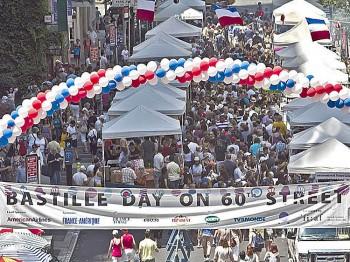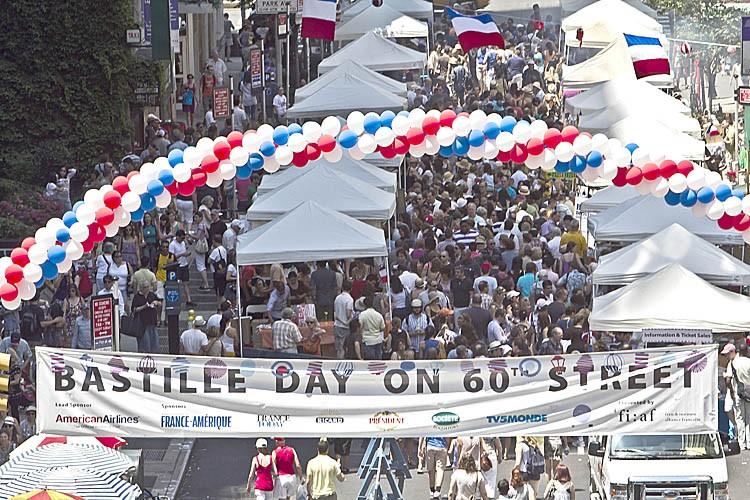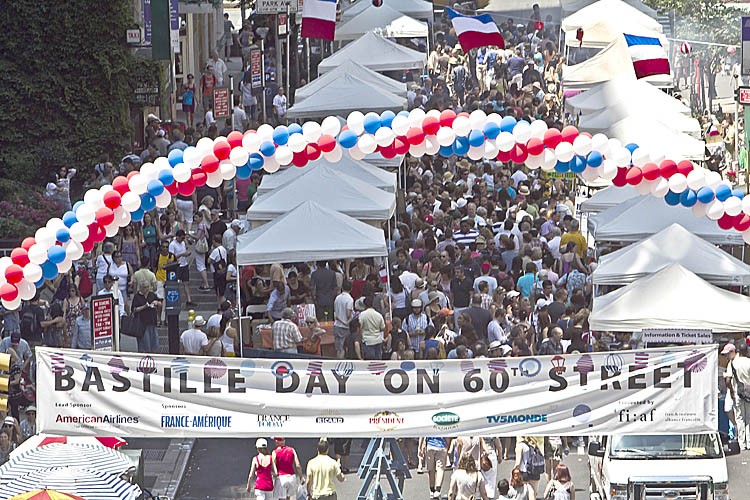Bastille Day à La New York
Crepes, feathered boas, and can-canning ladies in black-and-white striped shirts took over 60th Street between Fifth and Lexington avenues on Sunday afternoon. It was a celebration of all things French in honor of Bastille Day.

RUES DE PARIS: A slice of Paris came to the streets of New York on Sunday for the celebration of French culture, Bastille Day. PHOEBE ZHENG/THE EPOCH TIMES
|Updated:






